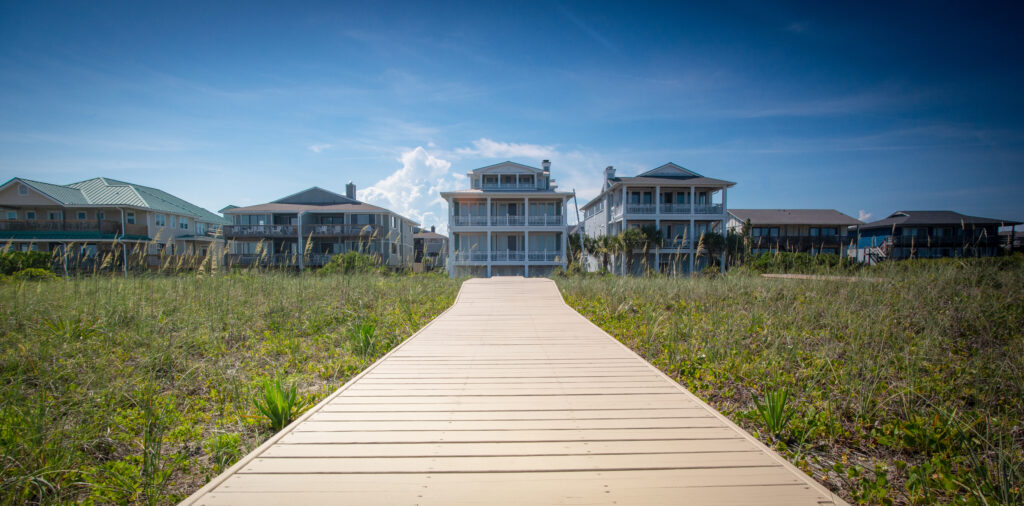Dividing the Vacation Home in Divorce: Practical Solutions for Shared Properties
For couples who have second homes that are used primarily on weekends or for vacation, determining how to share usage during the divorce process and how to divide the asset after the divorce is an important issue that needs to be resolved. These homes are often viewed as more than just a real estate holding, we often see one or both parties have strong emotional ties to the property, which can make the negotiations more complicated. Whether it’s a beach house or a mountain retreat, deciding what to do with this shared space requires thoughtful planning if the goal is to create an arrangement that respects both of your needs and the best interests of any children who share the home with you.
Practical Considerations for Sharing a Vacation Home During Divorce

If you decide to share a vacation home whether on a short term or long-term basis, you must establish clear guidelines to prevent misunderstandings and foster a smoother co-ownership experience. Some common questions to be addressed include:
- Who handles maintenance and repairs?
- How will costs be divided?
- What condition should the house be left in after each visit?
- Will new partners be allowed to visit?
- Who is responsible for cleaning and restocking essentials?
How to Navigate Sharing a Vacation Home During the Divorce Process
During the divorce process, you may still want to keep access to your vacation home. One option is to create a home-sharing arrangement. Some couples agree to use the house when they have parenting time, allowing their children to continue enjoying familiar surroundings. Others alternate weekends, providing each person with solo time at the property. Either arrangement offers a break from spending time together in the primary home, which could be helpful if living together has become especially stressful during the divorce process.
It is important to discuss financial responsibilities during this time. Vacation homes have ongoing expenses, such as maintenance, utilities, and property taxes. Clear agreements about how costs will be shared—and who handles emergencies—will prevent future conflicts.
Exploring Long-Term Options for a Vacation Home After Divorce
There are several common long-term options for vacation homes after a divorce:
- Sell the Property: If neither of you wants to keep the house or if the financial burden is too high, selling the home and dividing the proceeds is a practical choice.
- One Person Buys the Other Out: If one of you wants to keep the home, you can negotiate a buyout. You will want to determine the home’s appraised value and agree on how to compensate the other person for their share of the equity.
- Continue Sharing the Home: Some couples choose to co-own the vacation home even after the divorce. This can work well if you both value the property and can maintain an amicable relationship. A clear agreement should outline how you will divide time, handle maintenance, and resolve future disputes.
Turning Your Vacation Home Into an Income-Generating Asset After Divorce
Another option is to retain the property for rental income. For instance, some couples decide to keep a vacation home but lease it to long-term tenants, seasonal renters or even those seeking short-term stays through online platforms. This allows the property to remain a shared asset that can generate income. An agreement should clearly outline each of your responsibilities in managing the property and how expenses and rental income will be divided. After the divorce, some couples create a limited liability company by which they can own the home together and run what is effectively a rental business.
Case Study: How One Couple Managed to Share a Lake House After Their Divorce
Through the Collaborative Divorce process, one couple, who shared a beloved lake house in New England, found a creative solution during and after their divorce. They agreed that they would continue to own the home together and that each parent would use the home when they had the children during their scheduled parenting time. This arrangement allowed the kids to continue to enjoy their favorite activities, from skiing in winter to boating in summer. The couple agreed to share the house under this arrangement for two years post-divorce, with regular check-ins to evaluate how the arrangement was working for each of them.
Initially, the agreement prohibited new partners from visiting the home. However, as their personal lives evolved, this became a point of discussion and adjustment. Despite some challenges, the couple’s clear communication and structured agreement allowed them to maintain joint ownership successfully and they agreed to continue the joint ownership beyond the initial 2 years.
What’s Next for the Vacation Home After Your Divorce? How to Ensure Your Best Interests are Protected
Dividing a second home during a separation requires clear communication and careful planning to ensure a fair outcome. Whether you choose to sell, negotiate a buyout, or continue co-owning the property, a well-structured agreement can reduce stress and protect your financial and personal interests.
At Vacca Family Law Group, we help families navigate complex property division with personalized solutions that prioritize your needs and goals. If you’re facing tough decisions about a shared property, our experienced team is here to guide you through the process with care and a strong focus on long-term stability and your future well-being. Contact us today for a free introductory call.
Vacca Family Law Group is located at One Grand Central Place, 60 E. 42nd St., Suite 700, New York, NY 10165
